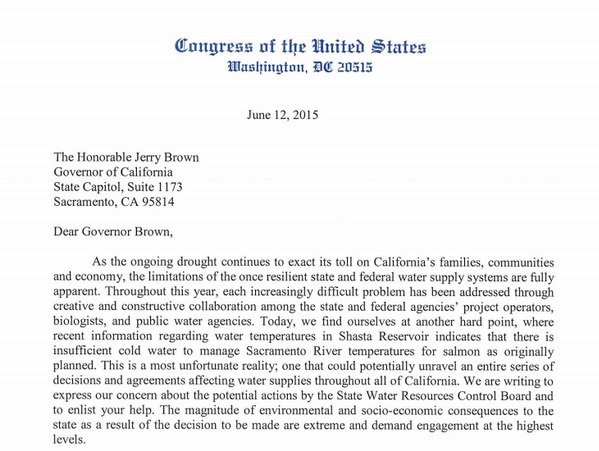Use the following link to download the slides from the California Farm Water Coalition presentation at Harris Ranch on March 12, 2016: Link (9MB PDF)
Bipartisan members of Congress seek balanced Shasta temperature plan
Brown
News Line – November 24, 2014
News Line – November 24, 2014 Read the latest news about issues affecting agriculture and farm water in California. No Coalition Responses Today Other News Water Bond OPINION: California opens door to new chapter in water policy From: J. Coleman & K. Tiegs, Sacramento Bee For California water managers, 2014 has been one for […]
News Line – November 21, 2014
News Line – November 21, 2014 Read the latest news about issues affecting agriculture and farm water in California. No Coalition Responses Today Other News Water Supply Feinstein shuts off California water talks until 2015 From: Michael Doyle, McClatchy DC Democratic Sen. Dianne Feinstein of California on Thursday pulled the plug on secret, high-stakes […]
News Line – November 20, 2014
News Line – November 20, 2014 Read the latest news about issues affecting agriculture and farm water in California. No Coalition Responses Today Other News Water Supply EDITORIAL: Why are U.S. lawmakers making California water deals in secret? From: Staff, Los Angeles Times California made extraordinary progress on water policy in this severe drought […]
News Line – November 19, 2014
No Coalition Responses Today Other News Water Supply Talks on drought bill underway on Capitol Hill From: M. Doyle & M. Grossi, Fresno Bee California’s water future is boiling below the surface this week.Only the chosen few have a clue about details. Bill documents, currently about 50 pages, are stamped “confidential draft language, do […]
News Line – November 18, 2014
Groundwater Depleting the water From: Lesley Stahl, CBS News It’s been said that the wars of the 21st century may well be fought over water. The Earth’s population has more than doubled over the last 50 years and the demand for fresh water — to drink and to grow food — has surged along with […]
